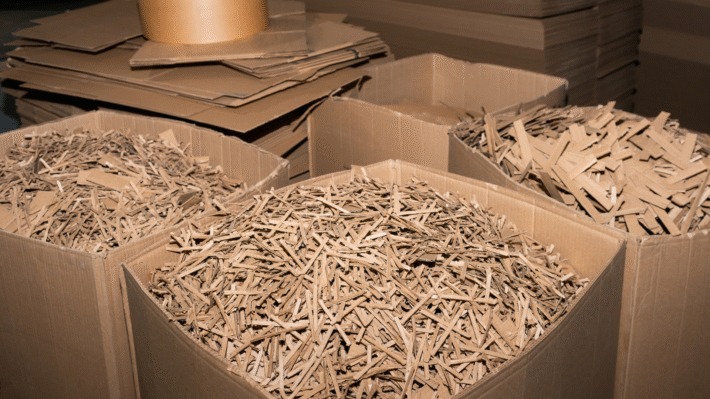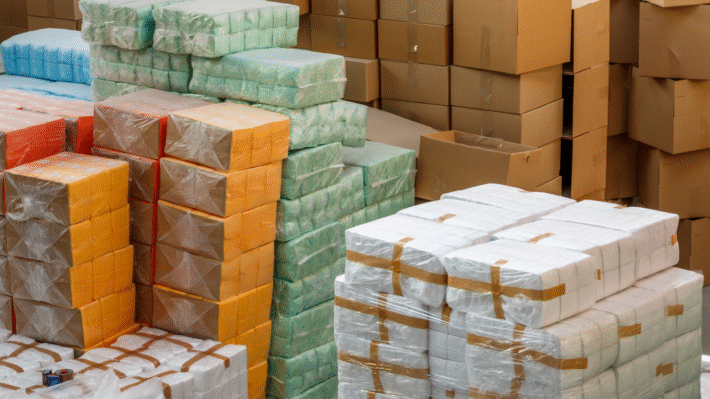Revolutionizing Aerospace Composites by Innovating Carbon Fiber Recycling for Circularity

The thrilling world of aerospace is embarked upon a groundbreaking journey, steering towards innovation with a strong focus on circularity within its composite supply chain, particularly carbon fiber recycling. The urgency for environmental accountability is calling for a radical shift. And guess what? We’re answering with the audacity of innovation. Despite the daunting challenges we face, from fragmented supply chains to skyrocketing recycling costs, resilient solutions are at hand. Our strategy? Embracing the 4Rs – reduce, reuse, recycle, repurpose – and boosting technological advances with tools like automation and AI. So buckle up as we delve into futuristic recycling methods that promise eco-friendly production, automated machinery, and more. We’re about to transform the aerospace industry, setting a new status quo that places circularity front and center. The future is now, and we are its architects!
Understanding the Need for Circularity in Aerospace Composites
Our planet’s wellbeing largely depends on how wisely we use our resources. Especially in industries like aerospace, where the stakes are high and the materials are complex. One such material is carbon fiber, a darling of the aerospace industry. But there’s an issue we can’t simply sweep under the rug: waste.
The Problem with Carbon Fiber Waste
Environmental Impact of Carbon Fiber
Carbon fiber is a fantastic material – it’s light, it’s strong, it’s perfect for aerospace. But, these charming qualities have a dark side. Carbon fiber production sponges a lot of energy and isn’t environment-friendly. Once tossed aside, carbon fiber sits there for centuries, stubbornly resisting degradation. Carbon fiber waste isn’t just a nuisance; it’s an environmental feudal lord, taking over our landfills and holding our future hostage.
Waste from Aerospace Industry
The airlines constantly work to upgrade and replace parts to keep the flight experience safe and running smoothly. The result? A huge mound of carbon fiber waste. It’s a serious problem, but we aren’t without solutions. Enter the concept of ‘circularity.’
Benefits of a Circular Supply Chain
Reduce, Reuse, Recycle
Remember the old-school “Reduce, Reuse, Recycle”? It’s not outdated, just underutilized. Especially in sectors with massive outputs of waste like the aerospace industry. How can we alleviate the carbon fiber waste problem? By reducing the production where possible, reusing where suitable, and recycling the remaining. It’s not just good for our planet, it’s good business!
Creating Closed-Loop Systems
Manufacturing goes one way; it’s linear. But if we wish to preserve our planet’s health, we must move from linear to circular systems. In such a method, every end is a new beginning. The goal is to create a closed-loop system where waste isn’t genuinely waste but a resource for the next production cycle. By innovating carbon fiber recycling, we can establish such a system, accomplishing circularity in aerospace composites supply chain. It’s not a far-off dream; it’s a necessary goal. Let’s make it a reality!
In conclusion, tackling carbon fiber waste and achieving circularity requires a shift. A leap from conventional, linear methods to innovative, circular ones. With a commitment to reduce, reuse, and recycle, we can lessen the environmental impact of this critical industry and ensure its sustainability for future generations.
Brace yourselves. Welcome to the era of circularity in aerospace composites!
Challenges in Recycling Carbon Fiber Composites
Now, let me tell you something – recycling ain’t no walk in the park; it’s full of challenges, especially when it comes to carbon fiber composites.
Complexity of Composites
Understanding Composite Materials
The very backbone of the aerospace industry is built upon these composites. So, what are they? Simply put, they are materials made from two or more constituent materials with different physical or chemical properties. When combined, they produce a material with characteristics different from the individual components.
Carbon fiber reinforced polymers (CFRP), for instance, are a type of composite that hold their weight (or rather, their lack of it!) in gold in the aerospace industry. Lightweight yet strong, these materials are the stuff dreams are made of. Whether it’s Boeing or Airbus, everyone’s riding the CFRP wave. But here’s the catch – the same characteristics that make CFRPs a boon also make them a bane when it comes to recycling. Their tough, resilient nature means they don’t break down easily, posing a puzzle for recyclers who need to separate the carbon fibers from the epoxy resin they’re usually set in.
High Recycling Costs
Fragmented Supply Chains
Hope you’re seated for this because the cost of recycling carbon fiber might just knock you out of your chair. The process of consigning CFRP waste to the recycling plant is nothing short of a Herculean task. One of the major contributors to these high costs is the fragmented supply chain, characterized by scattered locations of waste generation and processing, mixed types of waste, and inconsistent waste volumes.
The story goes something like this – the airplane manufacturers like Boeing and Airbus are based in one corner of the world, the recyclers in another, and let’s not even get started on the climate-controlled storage units needed to prevent degradation of the carbon fiber during transport. It’s a logistical nightmare of the highest order.
The road to recycling aerospace composites is indeed a rocky one, paved with numerous challenges, each bigger than the last. But every challenge brings with it an opportunity. And it’s this opportunity that the industry needs to seize in order to bring about circularity in the supply chain.
Next time I’ll dive into some of the innovative recycling methods being adopted to tackle these challenges. Until then, remember, every end is a new beginning, especially in the world of recycling. Stay green, my friends.
Innovative Recycling Methods
Our ability to innovate creatively is one of the things that sets us apart as humans. In the same spirit, we’ve devised some truly ingenious ways to repurpose aerospace composites. Let’s take a closer look.
Mechanical Recycling Processes
Mechanical recycling is one of the most straightforward methods we use today. It’s a lot like it sounds. We take the carbon fiber composites and grind or shred them into smaller pieces.
Grinding and Shredding
Think of grinding and shredding like breaking down a LEGO tower. We’re not trying to destroy the LEGO bricks (our carbon fibers), just separate them so we can build something new.
But here’s the challenge. This grinding process can sometimes damage the carbon fibers, weakening them. That’s kind of like trying to build a new LEGO tower with chipped and worn out bricks. It’s possible, but it’s not exactly ideal.
Maintaining Fiber Quality
That’s why, in mechanical recycling, it’s essential to keep the fiber quality high. This means we have to be careful with how much force we use when grinding so we don’t end up with too many damaged fibers.
Chemical Recycling Techniques
Chemical recycling uses chemicals (you guessed it!) to break down the polymers holding the carbon fibers together. It’s a bit like using a special dissolving agent to separate glued LEGO bricks, leaving them unharmed and ready for reuse.
Solvolysis and Pyrolysis
Two of the most common methods of chemical recycling are solvolysis and pyrolysis. Without getting too science-y, solvolysis uses solvents to dissolve the polymer matrix, while pyrolysis uses heat to break it down.
Hydrothermal Processing
Hydrothermal processing, another method, uses water and heat under high pressure. It’s a cleaner process, with less environmental impact.
Thermal Recycling Approaches
Thermal recycling seems to be veering off from our LEGO analogy. It uses extreme heat to incinerate the resin in the composites, leaving just the fibers behind.
Incineration and its Impact
Incineration can get tricky because it consumes a lot of energy and has potentially harsh environmental impacts. So, this method is a bit of a mixed bag in the grand scheme of things.
Bio-based and Hybrid Solutions
Last but not least, we’ve got bio-based and hybrid solutions. These mix methods from all the other processes in our toolkit to recycle aerospace composites.
Eco-friendly Production Methods
Here, we’re using bio-polymer composites and biodegradable resins. The goal is to make recycling greener, decreasing the environmental impact of composite production and disposal.
In all these methods, the priority is to create a circular system that’s good for the aerospace industry, good for the economy, and great for Planet Earth. So, next time you see an airplane in the sky, remember: recycling in aerospace is all about finding new ways to fly high, without forgetting our responsibility to the ground beneath our feet.
Technological Innovations Facilitating Recycling
As the famous saying goes, necessity is the mother of invention. Nowhere is that clearer than in the aerospace industry’s drive to create circularity in their supply chain, particularly when it comes to recycling carbon fiber. In today’s digital era, key technological innovations have emerged that are playing a pivotal role in revolutionizing the recycling process.
Automation in Recycling
Take any modern recycling facility, and you’ll find a steady bustling scene filled with sounds of grinding machines, shredding devices, and yes, even robots!
Dismantling and Sorting with Robotics
You heard that right! Robotics, once confined to automated assembly lines, have found a prominent place in the recycling practices of aerospace composites. High throughput, precision, and the ability to function seamlessly in environments hazardous to humans bring robots center-stage in dismantling and sorting of aerospace waste.
Advancements in technology have produced robots capable of disassembling complex machinery, enhancing the efficiency of the recycling process. They can recognize and sort waste materials based on their composition – a task meticulously daunting for humans. Imagine a robotic arm swiftly picking up broken carbon fiber scraps, deftly sorting them, readying them for their next ‘rebirth’. It’s a recyclers dream made possible by the wonders of technology!
AI and Machine Learning Applications
As impressive as robotic automation might be, the role of Artificial Intelligence and Machine Learning in refining recycling methods cannot be overstated.
Optimizing Processes and Quality Control
The boon of AI and Machine Learning lies in their capacity to learn from and make sense of complex patterns in massive amounts of data. These data-driven technologies can analyze and optimize carbon fiber recycling processes, bringing down costs, improving efficiency, and boosting the quality of recycled materials.
Machine Learning algorithms sift through vast data points, adjusting and controlling recycling machinery to get the highest quality output. Flight Data Recorders, colloquially known as “black boxes,” store a goldmine of data which AI can utilize to predict maintenance needs and even assist in efficient dismantling and sorting procedures.
Moreover, AI-driven systems aid in maintaining rigorous quality controls, ensuring that only the best recycled materials make their way back into the circular supply chain.
There you have it, folks! A glimpse into how modern technologies like automation, robotics, AI, and Machine Learning are aiding the aerospace industry in its quest to create circularity in composites supply chain by innovating recycling methods for carbon fiber. The future of sustainable aerospace is not just on the horizon; it’s here now!
Economic and Logistical Considerations
Money talks, right? Well, it’s no different in the world of aerospace composites and carbon fiber recycling.
The Cost-Benefit of Recycling
Let’s break this down and see if it makes sense, financially speaking. Kicking off a recycling program requires investment, there’s no doubt about it. But does it pay off in the long run?
Well, recycling carbon fiber involves cutting down on the astronomically high costs of new production. So while there’s an upfront cost to get started, there can be significant savings in the long term. Manufacturing new carbon fiber involves energy-intensive processes and expensive raw materials. And if we’re looking at throwing this stuff away, then we’ve got pricey landfill or incineration costs. So, yeah, recycling can look pretty good in the wallet aspect.
Incentives and Tax Breaks
And don’t forget about incentives and tax breaks. Governments worldwide are eager to support greener business practices. They’re rolling out reward schemes left, right, and center. Carbon taxes can be dodged, and incentives for ‘going green’ can add up quickly.
Building a Circular Supply Chain
But what about the logistics of the whole thing? Can we rejig the supply chain to not just support recycling but make it thrive?
The answer is a resounding yes. A circular supply chain, unlike the traditional linear model where products end up in the landfill, aims to return materials into the production process. The name of the game here is ‘reverse logistics’.
Reverse Logistics and Transportation
Now imagine this: instead of a one-way trip from production, through use, to disposal, products like our carbon fiber composites make a round trip. They start with production, go through usage, and then they come back as raw materials.
We’re talking about an about-face for logistics, where transportation becomes a two-way street for materials like carbon fiber composites. Recycling becomes a vital, integral step, not just a feel-good, eco-friendly side note.
So there you have it. With some foresight, savvy initiatives, and a willingness to shake up the status quo, we’re set to turn carbon fiber recycling from an expensive ambition to an achievable reality–and one that makes sense economically!
Policy and Industry Initiatives
Leap into the new era of policy and industry initiatives! The aerospace industry is not playing around. Larger sustainable actions are unraveling. From government regulations to accelerative moves from aerospace giants, Boeing and Airbus, there’s a lot going on!
Government Regulations on Recycling
There are various global regulations and policies nudging industries towards a green, sustainable future:
Standards and Certifications
From blazing Europe to chilly Antarctica, stringent standards and certifications endorse eco-friendly composites across the globe. ISO 14001 gets implemented, assuring businesses incorporate environmental-friendly processes. In the USA, Resource Conservation and Recovery Act (RCRA) regulate hazardous waste from cradle to grave. Simply put, from the creation of waste to its disposal.
Aerospace Companies Leading the Change
Making big strides in creating sustainable composites are our heroes without capes: aerospace companies.
Innovations by Boeing and Airbus
Boeing has been a trailblazer in innovating carbon fiber recycling. They’ve partnered with ELG Carbon Fibre to recycle excess carbon fiber used in production. Airbus isn’t far behind. They’ve embarked on a “Clean Sky” mission, conducting research on recycling carbon fiber composites.
Contributions of Startups and Partnerships
Progress isn’t just from big corporations, and startups and partnerships are proving this right.
Collaboration for Sustainability
Pioneering startups like Carbon Clean Solutions and FIBERtec are working to deliver carbon capturing solutions. These eco-champions, along with forward-thinking universities, governments, and non-profits, are joining hands in public-private partnerships for sustainability.
Wrapping this up, I’ll tell you – the future for carbon fiber recycling in the aerospace industry looks brighter with clear government regulations and innovative industry initiatives. From startups to sultans of aerospace, everyone’s pulling their weight to change one carbon fiber at a time. And this push towards sustainability, folks, is just the beginning! How exciting is that?
Future Directions for Carbon Fiber Recycling
If the past is any indication, the future of carbon fiber recycling in the aerospace industry is full of promise. We’re headed towards a tomorrow full of innovative techniques, where the dream of circularity in the aerospace composites supply chain might finally become a reality.
Next-Generation Recycling Technologies
Down the road, the carbon fiber recycling industry is set for a bustling array of technologies that will flip the script on how it all works. It’s not just about reducing waste or reusing materials anymore. It’s about finding radical ways to do things better, faster, and more effectively.
Automated and Innovative Systems
In the not so distant future, we’re likely to see automated systems taking the lead role in carbon fiber recycling. Imagine robots smartly sorting, separating, and dismantling composite materials without humans having to lift a finger. It’s going to be a technological revolution, one that holds the potential to maximize efficiency, slash costs, and minimize errors.
These innovative systems, which may seem like sci-fi today, will harness the awesome power of Artificial Intelligence and Machine Learning. These advanced technologies will help us optimize processes, predict maintenance needs, do quality checks, and even sort waste.
The Influence on Aircraft Design
This new wave of carbon fiber recycling isn’t just going to affect how we treat waste. Interestingly, it is also set to play a significant role in how aircraft are designed.
Towards Net-Zero Emissions
As we make strides towards a more circular supply chain, we also move closer to the goal of achieving net-zero emissions in the aerospace industry. In other words, aircraft design is expected to be increasingly inclined towards creating machines that not only function optimally but also contribute minimally to environmental degradation.
New aircraft designs will have a strong emphasis on utilizing materials, primarily CFRPs, that can be efficiently recycled at the end of their life cycle. This paves the way for the production of lighter, more fuel-efficient planes designed for minimal environmental impact right from the start.
Our skyward journey into the future of carbon fiber recycling in the aerospace industry is riddled with challenges, no doubt. But with every passing day, we’re moving closer towards turning this future into reality, pioneering a global effort towards more sustainable aerospace practices.



